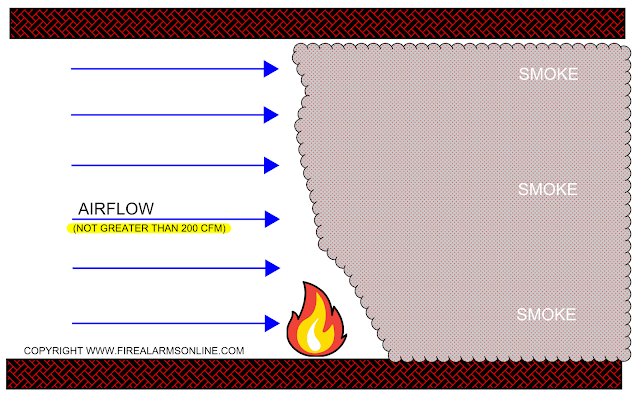Understanding Fiber Optics for Fire Alarm & Low-Voltage Systems
When choosing the proper cabling for life-safety and low-voltage installations, one of the most common debates is Single Mode versus Multi Mode Fiber. The decision matters. Your fire alarm control panels, networked notification systems, and distributed low-voltage components all depend on reliable communication. Even a momentary failure can compromise life safety.
Fiber optics use pulses of light to transmit data across strands of glass. Because fiber is immune to electromagnetic interference, it’s ideal for buildings with high electrical noise, long cable runs, or strict reliability requirements—especially in modern fire alarm and integrated security systems.
Let’s break down both types of fiber so you can choose the best option for your project.
What Is Single Mode Fiber?
Single Mode fiber is designed to carry a single beam of light over extremely long distances with minimal loss. Its core size is approximately 8–10 microns, which allows light to travel straight without bouncing.
Key Advantages:
- Supports very long distances, often 10+ miles
- Higher bandwidth capability
- Ideal for campus-wide fire alarm and security networks
- Best long-term scalability as technology evolves
Ideal Use Cases
- High-rise buildings
- Long-distance network interconnection
- Government, transportation, and industrial complexes
- NFPA-required remote annunciation or control linking across large campuses
If your project demands future-proofing, Single Mode is almost always the stronger choice.
What Is Multi Mode Fiber?
Multi Mode fiber uses a larger core (50–62.5 microns), allowing multiple beams of light to travel simultaneously. This increases signal dispersion, which limits distance.
Key Advantages:
- Lower equipment cost
- Easier to terminate
- Great for short-run low-voltage applications
Limitations:
- Distance is limited—typically 300–2,000 feet, depending on equipment
- Lower bandwidth ceiling
- Not suitable for large campuses
- Multi Mode works well in compact buildings but struggles in large-scale life-safety networks.
Single Mode vs Multi Mode Fiber: Key Differences
Bandwidth matters more each year, especially with high-definition security cameras, IoT devices, and building automation.
Distance Ratings for Life-Safety Applications
Fire alarm systems often require communication between fire alarm control units on different floors or buildings. NFPA 72 guidelines emphasize the reliability of pathways—fiber is a top choice.
Single Mode becomes nearly mandatory where:
- Buildings are spaced far apart
- Runs exceed 2,000 ft
- Future upgrades are part of the plan
Multi Mode can pass inspection but may become a bottleneck for future expansions. Make sure to consult with the manufacturer's recommendations in terms of which mode of fiber to use when connecting networked fire alarm control units.
Choosing the Right Fiber for Fire Alarm Systems
For fire alarm and mass-notification systems, reliability and distance matter more than cost. Single Mode fiber ensures:
- Long-term compatibility
- Lower signal loss
- Better performance with networked panels
Multi Mode is acceptable for small buildings where fiber runs are short and cost is a primary concern.
Choosing the Right Fiber for Low-Voltage Integrations
Low-voltage systems—CCTV, access control, intercoms, BMS—often demand strong bandwidth. High-resolution IP cameras, for example, can overwhelm older Multi Mode infrastructure.
Use Single Mode if:
- You’re installing 4K or 8K CCTV
- Designing a multiple building CCTV system
- Your runs exceed 1,000–3,000 ft
- You're linking multiple buildings
- Building to Building backbone for:
- Access Control
- Intercom Systems
- Public Safety DAS / ERRCS
- VoIP Phone Systems
- BMS / HVAC Networks
- 10G, 40G, 100G Networks
- Fiber is immune to EMF/RFI but single mode is preferred in:
- Factories
- Power Plants
- Transportation Hubs
- Heavy Mechanical Rooms
Use Multi Mode if:
- Your runs are short
- You're integrating into an existing Multi Mode backbone
- When cost is a factor:
- Education Buildings
- Hospitals
- Retail Spaces
- Audio Video systems often use MMF for short-haul HDMI or IP-based video transport.
Cost Comparison
While Multi Mode is cheaper up front, Single Mode becomes cheaper over time due to easier upgrades.
Installation Best Practices
- Avoid tight bends—fiber is delicate
- Test with OTDR and light-source meters
- Use proper connectors (LC, SC)
- Label strands clearly for future service
- Check distances against manufacturers’ specs
Common Mistakes to Avoid
- Mixing Single Mode and Multi Mode gear
- Exceeding allowable distances
- Poor termination quality
- Ignoring future bandwidth needs
FAQs
1. Is Single Mode better for fire alarm systems?
Yes—especially for large or multi-building systems where long distances are common. Make sure to consult the manufacturers documentation to verify which mode of fiber is to be used with the specific network cards.
2. Is Multi Mode cheaper to install?
Typically yes, because Multi Mode transceivers are less expensive.
3. Can I mix Single Mode and Multi Mode fiber?
No. They are incompatible without a media converter.
4. Which fiber is best for CCTV?
Single Mode, particularly for high-resolution IP cameras.
5. Does fiber improve fire alarm reliability?
Absolutely. It eliminates electromagnetic interference and increases communication integrity.
6. How long does fiber last?
Fiber cabling can last 25–30+ years, making it a strong long-term investment.
Conclusion
When comparing Single Mode versus Multi Mode Fiber, the best choice depends on your fire alarm and low-voltage needs. For long distances, scalability, and maximum reliability, Single Mode is the clear winner. Multi Mode is suitable for smaller, cost-sensitive projects, but its limitations can create bottlenecks in modern buildings.
If longevity, performance, and safety matter—choose Single Mode.
Recommended external resource:
https://www.flukenetworks.com/blog



























